Big data analytics
Greenplum utilizes parallel processing and data distribution across multiple nodes, allowing complex analytic queries and aggregations to be performed on large datasets with speed and efficiency.
A fully managed service that provides easy deployment, customization, continuous performance monitoring, automatic data backup, and flexible on-demand scaling.
Greenplum utilizes parallel processing and data distribution across multiple nodes, allowing complex analytic queries and aggregations to be performed on large datasets with speed and efficiency.
Greenplum ensures the safe and secure storage of financial data, as well as its integrity and consistency, through ACID compatibility. In addition, Greenplum provides functionality to perform sophisticated financial analytics, including aggregations, summary tables and calculation of key financial indicators.
With Greenplum, you can store and analyze data on sales, pricing, marketing activities and customer feedback. It supports the execution of complex SQL queries, including data joins and groupings. This allows you to investigate the competitive situation and make strategic decisions based on analytics.
Greenplum can store and process large volumes of data, enabling sophisticated analytical operations to build predictive models and scenarios. It can be used to forecast trends, customer behavior, business operations results and other important indicators.
Customize your Greenplum cluster configurations with a simple “Create Wizard” and deploy in one click.
Greenplum backups are on-demand, and automation is scheduled. You can always customize the frequency and number of backups to save.
Ready to run a cluster in just a few minutes. Database settings are optimized for the selected cluster size and can be changed if necessary.
The DBaaS concept involves storing and managing data in a cloud environment, where the user does not need to install and maintain a database - he gets a ready-made and optimized solution in the cloud.
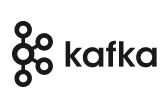
Open source distributed streaming processing platform. Provides high throughput and ensures streamlined data delivery between producers and consumers. Ideal for streaming data processing, event-notification architecture implementation and real-time big data processing.
Discover
High-performance open source columnar database. Provides fast analytics and big data processing. It is optimized to run complex analytical queries on large datasets. ClickHouse offers high speed, efficient resource utilization and scalability, making it a popular choice for real-time analytics and big data workloads.
Discover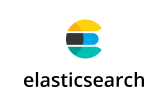
A distributed search and analytics system. It is well suited for scenarios where fast and scalable data access is required, such as site search, log analysis and real-time data monitoring.
Discover
A flexible NoSQL database optimized for storing unstructured data such as documents, images and social media. With easy scalability and high performance, MongoDB is the ideal choice for Big Data projects and applications requiring real-time data processing.
Discover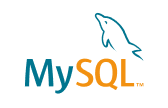
A powerful relational database that provides high performance and reliability. It is optimally suited for web applications, e-commerce and CMS where handling large amounts of structured data is important.
Discover
A powerful data mining and analysis tool optimized for processing large volumes of data and extracting valuable insights with full-text search, advanced analytics and data security. Well suited for complex analytical systems and real-time data monitoring.
Discover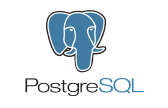
A powerful and reliable open source relational database. It has a wide range of features, supports ACID transactions and provides flexibility for storing and processing structured data. Supports extensions and provides powerful features for database developers and administrators.
Discover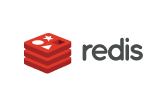
A fast, scalable storage system best suited for caching, sessions, message queues, and lightweight data analytics. Its flexibility in data structures and high performance make Redis a popular solution for web applications.
DiscoverProvide continuous protection and instant access to rapidly growing datasets. Highly scalable and cost effective storage that integrates with your application scenarios.
Distribute traffic and workloads in the most efficient way: no server downtime, overload or underutilization.
Can't find an answer to your question? Ask us and we'll tall you!
Greenplum is a massively parallel data processing DBMS built on PostgreSQL and designed for processing large amounts of data. In the massively parallel architecture, data is divided into fragments processed by independent central processors and stored on different media. This distributed structure eliminates the limitation of having a single central server and speeds up data processing and retrieval because these tasks can be run in parallel on multiple servers.
Greenplum supports the relational data model, maintains data immutability, and can be applied to data that is sensitive to accuracy and structure. For example, for financial transactions, banking, retail and other tasks with a large number of transactions. Greenplum is a complete DBMS with indexes and queries, allowing you to quickly access specific data. Greenplum supports various types of replication and sharding, increasing the availability and speed of data access.
Although Greenplum is built on PostgreSQL, it has a number of fundamental differences from PostgreSQL that allow Greenplum to be used for analytical tasks on large data volumes:
Managed Service for Greenplum - provides a ready-to-use Greenplum DBMS, the cluster of which uses cloud architecture for hosting.
You can focus on working with the database, enjoy all its benefits, and we will take care of the technical issues of organizing the database cluster and its operation.
Our area of responsibility includes:
Full backup of the database cluster by default is performed automatically once a day between 1:00 AM and 5:00 AM GMT+4. Every 30 seconds are saved to the database cluster transaction logs, which allows you to restore the cluster state at any point in time within the backup retention period, except for the transactions of the last 30 seconds that have not yet been saved.
Manual start of backup creation is not supported.
You do not need to purchase a license to use our Greenplum service. The Apache License 2.0 is a permissive license and does not require you to pay to use the product.
Yes, you can change the cluster configuration to increase compute resources and storage capacity in the control panel. Changing the configuration to decrease compute and storage capacity is available by contacting the manager or through the ticket system.
Changing cluster characteristics can take some time, depending on the size of the cluster and the required configuration. On average, the process of changing the cluster configuration takes about 30 minutes. During this time, software updates and other technical work may be installed.
If the Greenplum DBMS version you are using is no longer supported by the developer, you will not lose access to your data. However, you will not be able to create new cluster nodes and will be notified by email to automatically upgrade to the next supported version. This upgrade will be performed even if you have disabled automatic upgrades.
For minor version upgrades, the client is notified 7 days in advance and for major version upgrades 1 month in advance of the automatic upgrade. Upon receipt of such notification, the customer should check the software interfacing with Greenplum for compatibility with the new version. If necessary, the customer should take measures to ensure compatibility with the new version.

If you work in IT, the term “cloud” isn’t just a buzzword — it’s a powerful tool for storing and processing data.

PaaS (Platform as a Service) was initially designed as a solution for developers to build applications without dealing with server setup and infrastructure management.

TCP/IP is the backbone of everything. This protocol stack is like the circulatory system of the Internet and cloud computing.